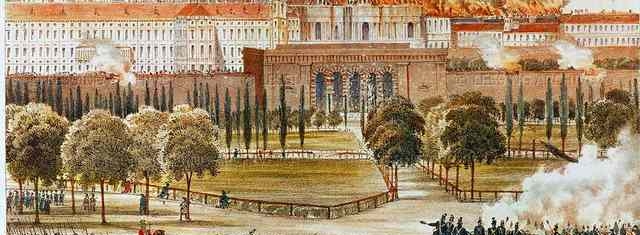News
The Hungarian Revolution Broke Out On This Day in 1848
Revolt Against Absolutist Rule

Hungarian Revolution 1848 (Source: about-history.com)
USPA NEWS -
Inspired by the upheavals in Paris and Vienna, on March 15, 1848, the Hungarian Revolution broke out against the ideology of the Habsburg Monarchy.
Suleiman the Magnificent’s victory at the Battle of Mohács in 1526, was seen by many Hungarians as a turning point in the country’s history and the end of Hungary as a unified and independent entity. It led to the division of the medieval kingdom of the Habsburg Monarchy, the Ottoman Empire and the Principality of Transylvania for nearly two hundred years.
By the end of the 17th century, the Battle of Vienna and the second Battle of Mohács set the stage for the reconquest of Hungary, and in 1699, the Treaty of Karlowitz, which concluded the Great Turkish War, marked the end of Ottoman control in Central Europe and enabled Vienna to claim all of Hungary, effectively ending the trisection of the newly enlarged Habsburg dominion.
The Kingdom of Hungary retained its old, historic constitution, however, which limited the power of the Crown and increased the authority of parliament. Even after the foundation of the Austrian Empire in 1804, Hungary’s central government structures remained well separated from the imperial government. By the start of the 19th century Hungary had become a major grain and wool exporter. The need of supplies for the Napoleonic wars boosted demand for food and clothing, but after Napoleon’s defeat, demand dropped and debt overtook Hungary. Economic hardship brought discontent and in 1825 there were calls for reform to overcome the industrial and political backwardness of the country.
Affected by the ideas of the French Revolution and of nationalism, Hungarian society was preparing for emancipation and the reformers’ opportunity came in the spring of 1848. On March 15th, a group of young intellectuals formulated a series of demands, including freedom of the press, and civil and religious equality. Mass demonstrations in Buda and Pest forced the Emperor to sign the so-called April Laws, which abolished serfdom and made peasants the owners of the land they cultivated. The Hungarian kingdom became a constitutional monarchy, with a representative parliament and Count Lajos Batthyány became the first Prime Minister of Hungary.
Thank you for reading my article. These are merely my thoughts and insights based on the facts. I use only verified sources. No fake news here. I write about a variety of subjects, mainly things I want to research and know more about. You can check out my website – Small Village Life at smallvillagelife.com, where I share useful articles and news.
Wendy writes for the United States Press Agency and is a former columnist with the Fulton County Expositor, Wauseon, Ohio.
Wendy writes for the United States Press Agency and is a former columnist with the Fulton County Expositor, Wauseon, Ohio.
more information: https://smallvillagelife.com
Liability for this article lies with the author, who also holds the copyright. Editorial content from USPA may be quoted on other websites as long as the quote comprises no more than 5% of the entire text, is marked as such and the source is named (via hyperlink).





